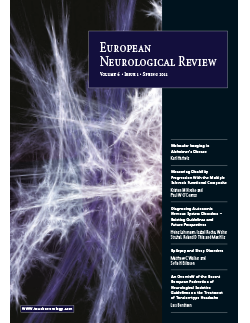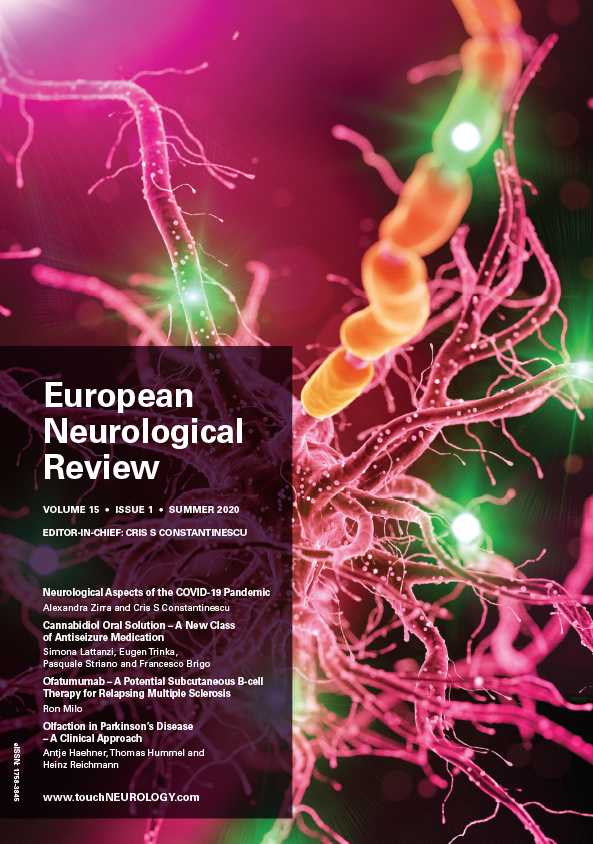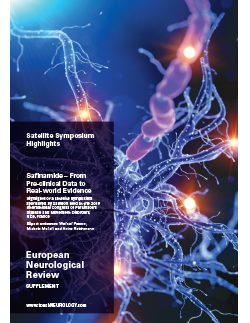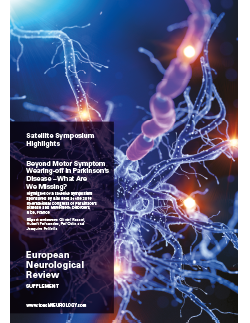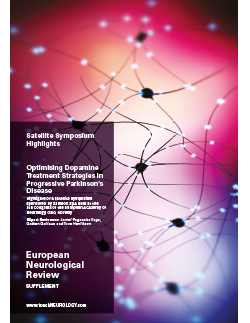EUROPEAN NEUROLOGICAL REVIEW – VOLUME 6 ISSUE 1 – SPRING 2011
Foreword
European Neurological Review provides extensive reviews in the field of basic and clinical neurology, including current and future disease treatment options, with the aim of giving clinicians an overview of the main research topics as well as providing diagnostic and treatment advances in order to assist clinicians in daily practice.
Current Issues
Niemann-Pick type C disease (NPC) is a pan ethnic, progressive neurological condition that is estimated to affect an estimated minimum of one in 120,000 Western Europeans.1 The neurological symptoms stem from a characteristic autosomal recessive storage of various lysosomal lipids, including unesterified cholesterol, glycosphingolipids and sphingosine. These lipids accumulate in a number of organs in […]
Neurodegenerative Disease
Neurodegenerative dementia has become the most rapidly growing cause of severe disability in the world. The most important risk factor is old age, while genetics and lifestyle also contribute. Therefore, better treatment and effective intervention are urgently needed at an early stage before the onset of severe disability. This requires further research into the risk […]
The increased incidence of Alzheimer’s disease (AD) and related dementias in European and other northern countries is creating a real challenge for primary care providers. Providing care for AD patients is a long-term commitment on the part of the primary care physician (PCP). The PCP plays a key role in the management of older adults […]
Brain Trauma
Psychiatric disorders frequently occur following a traumatic brain injury (TBI) and depression is the most common.1,2 When psychiatric diagnostic criteria are used, the prevalence of major depressive episode (MDE) in persons with moderate to severe TBI ranges from 26–36%.3–7 A recent study in the Journal Of the American Medical Association suggests that the first-year incidence […]
Multiple Sclerosis
Evaluation of new treatments in clinical trials of multiple sclerosis (MS) requires valid and reliable measures of disability and disease progression. It is also important to monitor clinical outcomes in individual patients to optimize care. There are different kinds of outcome measure, including physician-oriented measures, such as those based on the neurologic examination and quantitative […]
Multiple sclerosis (MS) is a chronic illness of the central nervous system affecting approximately 2.5 million young people worldwide.1 Regarded as exclusively a white matter (WM) disease, clinicians are now facing the notion, known to pathologists for over a century, that MS may affect the gray matter (GM) as well.2 Currently, MS is an incurable […]
Chronic Inflammatory Demyelinating Polyneuropathy
Chronic inflammatory demyelinating polyradiculoneuropathy (CIDP) is a relatively rare immune-mediated polyneuropathy with an overall prevalence of one to three per 100,000 adults.1–3 The clinical diagnosis of CIDP is based on clinical, electrophysiological and cerebrospinal fluid features. A typical CIDP patient has chronically progressive, stepwise, or recurrent symmetric proximal and distal weakness and sensory dysfunction of […]
Autonomic Nervous System Disorders
Disorders of the autonomic nervous system (ANS) can be of central or peripheral origin, and may be primary illnesses (e.g. primary autonomic failure, multiple system atrophy) or develop secondary to other diseases (e.g. Parkinson’s disease, diabetes, stroke, Guillain Barré syndrome). The anatomical and functional organisation of the ANS is quite complex, involving structures within the […]
Epilepsy
Approximately 50 million people have epilepsy worldwide1 and up to one-third of these people continue to experience seizures despite drug treatment.2 Diverse criteria have been used to define drug resistance by different researchers, making it difficult or even impossible to compare the results across different studies. To improve patient care and facilitate clinical research, the […]
Throughout the ages, sleep has been considered akin to death; indeed, Homer referred to sleep as the ‘brother of death’. However, the advent of electroecephalography (EEG) has expelled this misconception and sleep is now recognized as consisting of active brain states during which many biologic processes occur, such as synaptic plasticity and memory consolidation.1 Sleep […]
Headache
This paper gives an overview of the recent guideline on the treatment of tension-type headache (TTH) published by a task force of the European Federation of Neurological Societies (EFNS).1 The guideline aimed to give evidence-based recommendations for the acute and prophylactic drug treatment of TTH. In addition, it aimed to provide a short overview of […]

Trending Topic
The surge in social media use seems to have become a sign of our times. Social media has ramified into not only our personal lives but, importantly, also our professional lives and will continue to do so in the future.1–4 At the same time, more neurologists resorted to online learning modalities, including podcasts and social media […]
Journal Archive
European Neurological Review is a peer-reviewed, free-to-access, bi-annual neurology journal comprising review articles, case reports, practice guides, theoretical discussions, and original research. It features balanced and comprehensive articles written by leading authorities, addressing the most important and salient developments in the field of neurology in practical terms.
Latest articles videos and clinical updates - straight to your inbox
Log into your Touch Account
Earn and track your CME credits on the go, save articles for later, and follow the latest congress coverage.
Register now for FREE Access
Register for free to hear about the latest expert-led education, peer-reviewed articles, conference highlights, and innovative CME activities.
Sign up with an Email
Or use a Social Account.
This Functionality is for
Members Only
Explore the latest in medical education and stay current in your field. Create a free account to track your learning.


